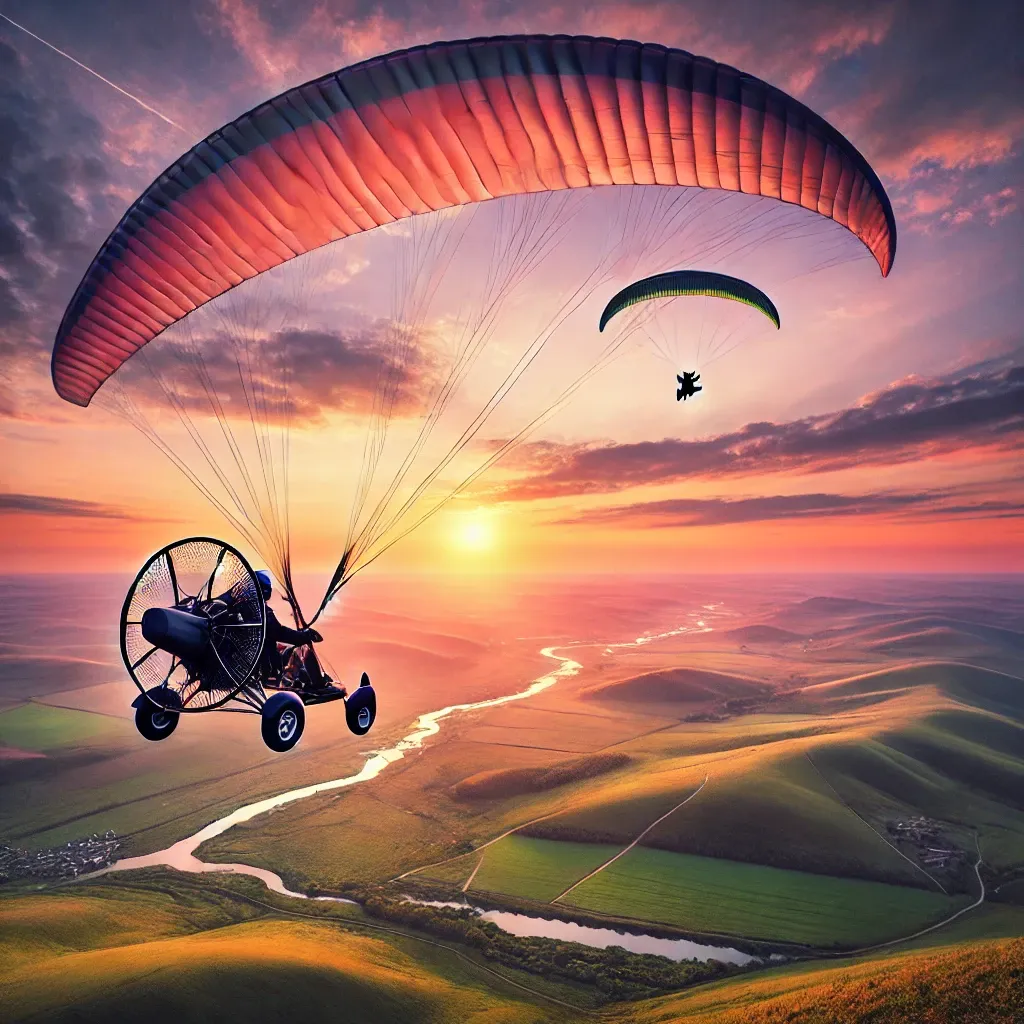
Written by: Gaggle Marketing on Oct 14, 2024
Flying is a dream shared by many, and the good news is that it’s more achievable than ever through paramotoring and paragliding! Imagine soaring through the skies, feeling the wind beneath you, and experiencing the freedom of flight—all without breaking the bank. In this guide, we’ll introduce you to the joys of flying, explore five compelling reasons to take up paramotoring or paragliding, and provide tips for overcoming the fear of heights.
Flying with paramotors or paragliders offers an accessible entry point into the world of aviation.
Ease of Entry:
One of the best things about paragliding is that in many regions, you don’t need a pilot’s license. The learning process is faster and more affordable than traditional aviation, allowing you to start your flying journey with just a few weeks of training.
Cost-Effectiveness:
Flying a paramotor or paraglider is much cheaper than owning and maintaining a traditional aircraft. Training programs are affordable, and the equipment is more budget-friendly.
Whether you choose paramotoring or paragliding, both options involve gaining essential skills to ensure safe and enjoyable flights.
Training Basics:
You’ll start with ground handling, mastering how to control your wing on the ground before taking to the air. Understanding weather patterns, wind, and aerodynamics is key to becoming a confident pilot.
Time Commitment:
Training can be completed in a matter of weeks, depending on how much time you dedicate. A balance between practice flights and daily life is crucial to becoming proficient.
Safety and proper equipment are the cornerstones of flying.
Gear Overview:
Paragliders need wings, harnesses, and reserve parachutes, while paramotor pilots will also use motorized units for powered flights.
Safety Equipment:
Helmets, radios, and variometers (to track altitude and rate of ascent or descent) are essential pieces of safety gear.
After your initial training, the real fun begins!
First Flights:
Most people start with tandem flights, flying alongside an instructor. Once you’re confident, you’ll progress to solo flights, where you’ll experience the freedom of the skies.
Community and Events:
Joining local flying clubs is a great way to connect with fellow pilots, share experiences, and learn from others. Fly-ins and competitions offer fantastic opportunities to test your skills and meet like-minded adventurers.
Flying offers an incredible sense of freedom that few other hobbies can match.
Connect with Nature:
Fly over untouched landscapes, soaring over forests, lakes, and mountains that are inaccessible by foot.
Flexibility:
You can launch from various locations, and with a paramotor or paraglider, you’re not tied to airports. Fly at your own pace and on your own schedule, whenever the weather permits.
Compared to owning a plane, paramotoring and paragliding are highly cost-effective.
Cost Savings:
The initial investment in gear and training is lower than with traditional aviation, and ongoing costs are minimal—especially for paragliders who don’t require fuel!
Accessible to Many:
No need for expensive licenses or dealing with complex bureaucratic regulations in many areas. This makes flying accessible to people who might otherwise find aviation out of reach.
Flying builds confidence and resilience.
Confidence Building:
Mastering the skills needed to pilot a glider or paramotor pushes you to overcome challenges and reach new heights—literally!
Stress Relief:
There’s a meditative quality to flying, where you can disconnect from everyday worries and enjoy the peace and calm of the open skies.
Flying isn’t just a solo pursuit—it’s a gateway to a vibrant community.
Meet Like-Minded Enthusiasts:
You’ll meet people from all walks of life who share your passion for flight, creating friendships and connections that span the globe.
Global Network:
Flying in different countries offers cultural exchanges and a chance to explore the world from a unique perspective.
Flying light has a low environmental footprint compared to traditional aviation.
Eco-Friendly Flying:
Paramotors use minimal fuel, and paragliding is silent and fuel-free, allowing you to experience the skies without a heavy carbon footprint.
Promoting Conservation:
Flying above pristine landscapes fosters a deep appreciation for the environment, encouraging pilots to become advocates for conservation and environmental preservation.
Fear of heights is a common concern for many aspiring pilots, but it’s important to differentiate between acrophobia (fear of heights) and aviophobia (fear of flying).
Taking small, manageable steps will help you overcome any fear you may have of flying.
Tandem Flights:
Starting with tandem flights allows you to experience flying in a safe, controlled environment alongside an experienced pilot.
Controlled Environment:
Training hills and flight simulators are fantastic ways to practice in a low-stakes environment until you feel ready for more independent flights.
Education:
Learning about the extensive safety measures in place and the reliability of the equipment used can help ease anxiety.
Developing the right mindset is crucial to overcoming fears.
Visualization:
Visualizing successful flights and imagining the feeling of freedom can help calm nerves before taking off.
Breathing Exercises:
Techniques like deep breathing can help you stay calm and focused during your flights.
Setting Achievable Goals:
Celebrate small victories, such as completing your first tandem flight or mastering a new skill, and build your confidence step by step.
Flying through paramotoring and paragliding offers an incredible opportunity to experience freedom, adventure, and personal growth. Whether you’re motivated by the desire to see the world from a bird’s-eye view, build new skills, or join a passionate community, there are countless reasons to take up this exciting hobby. And for those with a fear of heights, with the right techniques and gradual exposure, you can overcome your fear and discover the joys of flight.
Baixe nosso aplicativo agora e comece gratuitamente!
Instrumentos de voo, replays, amigos, locais de voo, clima e muito mais ao seu alcance com nosso aplicativo fácil de usar.